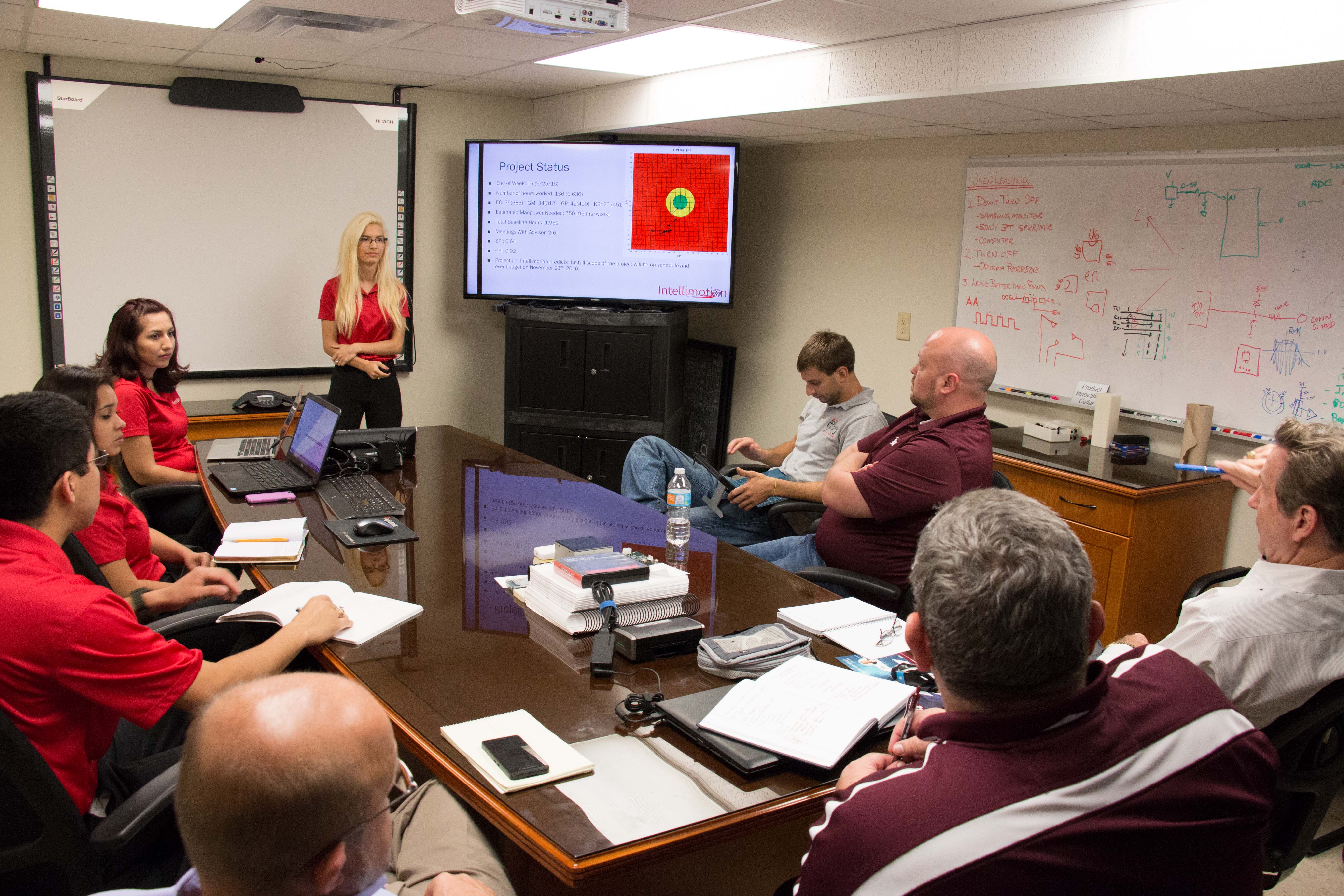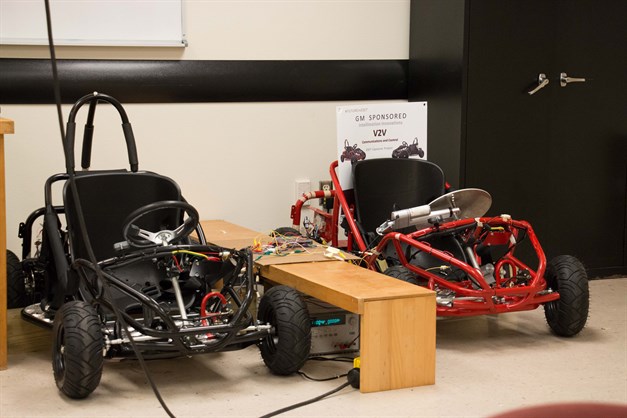
Christopher Mentzer, manager of the Unmanned Systems R&D Branch at the Southwest Research Institute (SwRI) in San Antonio, recently visited the Department of Engineering Technology and Distribution (ETID) at Texas A&M University for recruiting and outreach meetings.
As part of his visit, Mentzer attended a team meeting for one of the Electronic Systems Engineering Technology (ESET) program’s capstone design teams that was held in the Product Innovation Cellar.
He was there to offer advice and encouragement to Intellimotion Innovations, the four-person team working on a Follow-Me vehicle-to-vehicle system development project. Mentzer received his Bachelor of Science in mechanical engineering from Texas A&M in 2002 and later received his Master of Science from the same department under the supervision of Dr. Reza Langari. Mentzer currently manages design and development projects to create similar technology for SwRI’s federal government customers.
Intellimotion’s project focuses on creating an initial test bed for a Vehicle-to-Vehicle Communications and Control (V2VC2) system using small-scale go-karts instead of passenger cars or trucks as is usually done.

The approach that caught the interest of General Motors uses small scale, electric vehicles that can be operated indoors or in highly confined spaces. The vehicles travel at a maximum speed of 20 mph and provide a development environment for sensors, embedded intelligence, algorithms and systems integration at a reduced cost. In addition, the two-vehicle system draws attention to science, technology, engineering and mathematics (STEM) outreach and recruiting.
The overall capstone project requires Intellimotion to develop a wireless communications-based system that can collect operational information from the lead vehicle and transfer the data to the follow vehicle. The vehicle will induce time delays based on speed to emulate the steering, acceleration and braking of the lead vehicle. Additionally, the team will implement an ultrasonic sensor to ensure the follow vehicle maintains a safe distance from the lead vehicle.
The embedded intelligence necessary for the lead vehicle is being designed and developed by Intellimotion, and a National Instruments myRIO unit is currently being used in the follow vehicle.
As part of the visit, Intellimotion demonstrated the current capability for the lead vehicle to monitor the position of the steering wheel as well as the position of the gas pedal and brake pressure and then to transfer the data using a ZigBee wireless communications channel. The vehicle is currently able to emulate all three of the control elements without the time delay associated with speed.
Mentzer urged the team to select a Hall effect sensor that would be able to count the teeth on the drive sprocket of each vehicle to augment the current sensors and actuators to improve overall control of the follow vehicle.
The team members have had a number of opportunities to talk with visiting high school students and teachers about their project and their decision to select Texas A&M for their undergraduate education. Based on these factors, ETID is continuing the development efforts by providing sponsorship for a second capstone team starting this semester.
Advance Technologies Innovations, which includes Brian Hogan, Tyler Lipperdt, David Moore and Greg Nallie, will take over the project at the end of the fall semester. It is currently planning the work that it will accomplish in the spring semester that will focus on replacing the myRIO unit in the follow vehicle with its own embedded intelligence design and integrating the use of an Inertial Measurement Unit in both vehicles.
